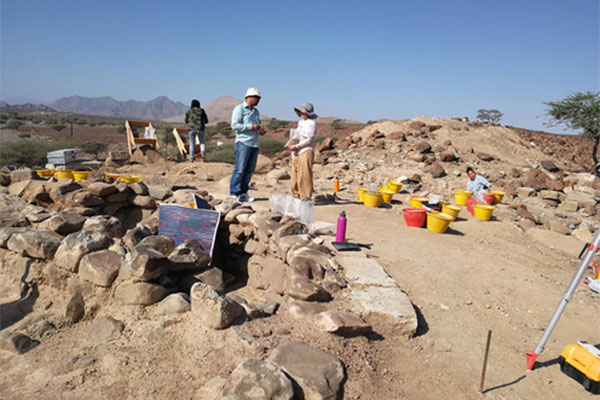
Oman varsity continues excavations in settlements
MUSCAT, January 28, 2018
Oman’s Sultan Qaboos University (SQU) is progressing with surveying and archaeological excavations in the Wilayat of Saham where the discovery of five archaeological sites was recently announced, a media report said.
The sites contain old settlements dating back to the "Umm Al Nar" civilisation, which is estimated to be about 4,500 years old (2500 - 2000 BC), reported Oman News Agency.
These sites are one of the oldest and most important archaeological sites in the North of the Sultanate. Their archaeological discovery began in 2010 through the SQU Department of Archaeology.
Dr Khalid Daghlis, head of Archaeology Department at SQU said: "The site of Dahwa was first discovered in 2010 by Dr Nasser al-Jahwari with the assistance of a student Waleed al-Muzaini from the Wilayat of Saham. The department conducted archaeological surveys between 2013 and 2015, which included an archaeological survey that revealed the existence of five archaeological sites, including ancient settlements dating back to the culture of Umm Al Nar (2500 - 2000 BC). These sites represent the oldest permanent settlements in the North of the Sultanate.”
He pointed out that during the excavation, a building that dates back to the early Bronze Age and to the Um Al Nar period was discovered. As a result, the team decided to excavate in a number of other buildings, taking into account the diversity in the planning of the building and the building area. He added that the eldest settlement on the site dates back to the period of Umm Al Nar and especially to the early stage, i.e., around 2500 BC.
The results of the analysis of "radioactive carbon 14" indicate that the settlement continued on site for 5 centuries until the end of the Umm Al Nar era in the period (1900 BC). The archaeological excavations showed that the site was later used during the Wadi Souk period (1900-1300 BC) as cemeteries. Later, they were used in the Iron Age as many cemeteries were discovered, most of them date back to the second Iron Age (1300 - 300 BC). The excavations also unveiled that parts of the site were also reused in the Hellenistic period, as cemeteries were discovered belonging to that period.







